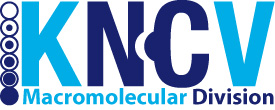Research overview
At the Debye Institute for Nanomaterials Science, chemistry and physics meet to study the properties of materials at the nanoscale. We specifically focus on three themes: catalysis, colloids and nanophotonics.
The institute is named in honour of a true pioneer of the physical chemistry / chemical physics field: Dutch scientist and Nobel laureate Peter Debye (1884-1966).
Soft Condensed Matter
Self-Assembly (SA) or Self-Organization of colloidal model particles is a central theme in our group. Not only do we develop new colloidal model systems with (several) SA steps in mind, we also develop methodologies to study and manipulate such processes with the use of external fields. Examples of the fields we use in our research are: gravity, structured walls (e.g. colloidal epitaxy), confinement, electric fields (including light: optical tweezers) and (shear)flow. Recently, combinations of two or more external fields and their use in so-called hierarchical SA processes are exciting new research directions.
Computer simulations of Soft Condensed Matter
Recent advances in the chemical synthesis and fabrication of colloidal particles have resulted in a spectacular variety of new colloidal building blocks. The main challenge is to exploit this huge variety of available colloidal building blocks and to self-assemble them into structured arrangements for advanced and functional materials and devices. The fabrication of these so-called ‘nanomaterials’ with a well-defined structure on the scale of tens to hundreds of nanometers, makes these materials perfectly suited for the manipulation of (visible) light. Hence, colloidal crystals with lattice spacings similar to the wavelength of light are considered to be prime candidates for the fabrication of photonic band-gap materials with potential applications in highly efficient light-emitting diodes (LEDs), solar cells, sensors, and optical computer chips. Additionally, nanomaterials with the right properties are likely to be instrumental in the development of new photovoltaic cells and electronic displays. The potential use of the spontaneous self-organisation of colloids as a promising and inherent cheap route for the fabrication of nanostructures requires not only the ability to tune the properties of the colloidal building blocks, but also a better understanding of the relation between the building blocks, their interactions, and the self-assembled structures. Additionally, the tunability of the effective interactions between the colloidal particles offers great opportunities. To be more specific, colloidal particles with anisotropic interactions can be synthesized by controlling the shape of the particles, or by creating ‘patches’ on the surface of the particles. The interactions between the particles can also be altered by modifying the dispersive medium, i.e. the addition of salt to the dispersion leads to screening of the electrostatic interactions, the presence of non-adsorbing polymer results in effective depletion attractions, critical Casimir forces arise due to the confinement of long-range density fluctuations when the host fluid is close to a critical point, and solvent-mediated interactions can arise when the solvent approaches a binodal. One can further modify the interactions by application of e.g. external electric and magnetic fields, templates, gravity, etc. Exploiting the self-assembly of these novel colloidal building blocks calls for theoretical tools to predict the structure and phase behavior of these particles.
Physical and Colloid Chemistry
One important aspect of the research in our section is the interplay between chemistry and physics; experimental research is conducted to establish the effect of particle shape and interaction on the macroscopic (physical) behaviour of colloids. To obtain a comprehensive view on the macroscopic features of colloidal systems, the thermodynamics (phase transitions), rheology (fluid dynamics), and diffusion and sedimentation properties are studied. To perform such studies, well-defined model particles with appropriate shape and tunable interactions are required. Consequently, the synthesis and characterisation of colloids is also an important topic within our section.
The van 't Hoff laboratory has developed extensive expertise on the synthesis of inorganic colloids (spherical SiO2, needle-like AlOOH, platelet-like AL(OH)3, and magnetic Fe3O4). Recently, also much attention has been paid to organic polymer colloids as for example polymethylmethacrylate.
Besides experimental work, also computer simulations and (statistical mechanics) theory form part of our research activities. The combination of chemical synthesis, physical experiments and theory makes colloid chemistry an attractive and interdisciplinary research area, in which people with different interest work.





